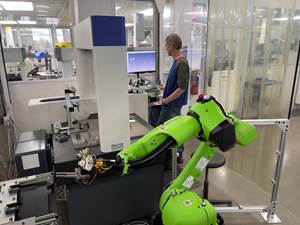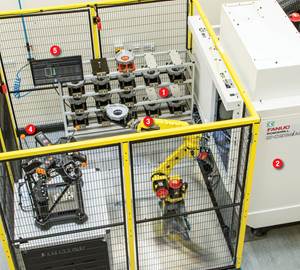Data-Driven Manufacturing Deconstructed
"Data-Driven Manufacturing" can be broken into three areas for better understanding: the conceptual, the technical and the practical.
Like many of us, I am sometimes baffled by the barrage of new terminology linked to current developments in how computers and computer networks are being used in factories and machine shops. We’re using labels such as Industry 4.0, Industrial Internet of Things, digital manufacturing, smart factories and many other names. I’ve been favoring the term data-driven manufacturing to refer to this whole area simply because the words are familiar and easy to explain (“Data-driven manufacturing means better decisions about processes and procedures,” I like to say).
At one time (20-25 years ago or so), the term computer-integrated manufacturing (CIM) was in vogue. CIM went away, mostly because the computers and software available in those days were simply not up to the application. There was no internet; the personal computer was just appearing. Otherwise, CIM was a useful term because integration was understood to mean “connected for more effective interaction,” which is still our goal today.
Lately, however, I have found it useful to sort out pronouncements, product news and discussions about all this stuff along these lines: Is the focus on the conceptual, the technical or the practical? The graphic at the top of this page shows how this classification works. Each panel lists representative entries, in no particular order.
Under conceptual, I group the big-picture, theoretical, futuristic words and phrases. When people talk or write about Industry 4.0, for example, I try to discern the vision underlying the comments. In other words, what will manufacturing look like, according to this source? What do they “see?” I call this the WHAT category.
Under technical, I group the interoperability standards, innovations in computer hardware and sensors, programming codes and new software technology that are necessary to make the conceptual come about. This is the HOW category. These developments explain how Industry 4.0 can be achieved. Personally, I find this category the most challenging, partly because it is filled with unfamiliar jargon and acronyms, and partly because it brings up nitty-gritty issues on highly specialized levels. Although it may not be necessary to understand the details or fine points of developments in this category, it is certainly helpful to be aware of the significance of them.
Under practical, I group the main applications or benefits promised by the work in the conceptual and technical fields. This is the WHY category. These are the compelling reasons for moving ahead with bold implementations of data-driven manufacturing. These are the rewards for heeding the visionaries and supporting the technicians. These are the justifications for embracing the changes and disruptions imposed by the WHAT and the HOW. We should keep these benefits and breakthroughs in mind, because they give us the energy and urgency to sustain progress.
I could have added one more category—the WHO. This would be a list of the national and international programs, federal agencies, standards-making organizations and trade associations that are shaping the vision, creating the building blocks and offering end products by which the manufacturing industry will advance. Instead, let me end here by simply suggesting that the most important entry in this category is the ultimate agent of change: YOU.
Related Content
Beyond the Machines: How Quality Control Software Is Automating Measurement & Inspection
A high-precision shop producing medical and aerospace parts was about to lose its quality management system. When it found a replacement, it also found a partner that helped the shop bring a new level of automation to its inspection process.
Read More5 Stages of a Closed-Loop CNC Machining Cell
Controlling variability in a closed-loop manufacturing process requires inspection data collected before, during and immediately after machining — and a means to act on that data in real time. Here’s one system that accomplishes this.
Read MoreMachine Monitoring Boosts Aerospace Manufacturer's Utilization
Once it had a bird’s eye view of various data points across its shops, this aerospace manufacturer raised its utilization by 27% in nine months.
Read MoreSwiss-Type Control Uses CNC Data to Improve Efficiency
Advanced controls for Swiss-type CNC lathes uses machine data to prevent tool collisions, saving setup time and scrap costs.
Read MoreRead Next
The Cut Scene: The Finer Details of Large-Format Machining
Small details and features can have an outsized impact on large parts, such as Barbco’s collapsible utility drill head.
Read More3 Mistakes That Cause CNC Programs to Fail
Despite enhancements to manufacturing technology, there are still issues today that can cause programs to fail. These failures can cause lost time, scrapped parts, damaged machines and even injured operators.
Read More









.png;maxWidth=300;quality=90)





.png;maxWidth=300;quality=90)










